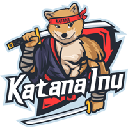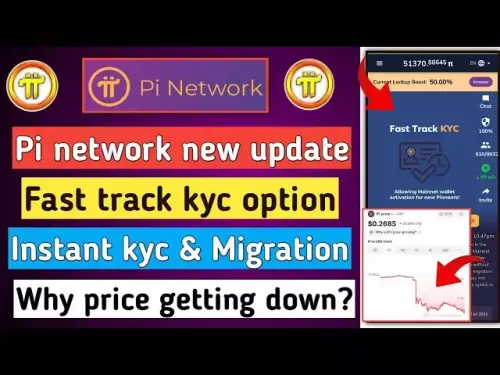 |
|
 |
|
 |
|
 |
|
 |
|
 |
|
 |
|
 |
|
 |
|
 |
|
 |
|
 |
|
 |
|
 |
|
 |
|
人工智能的快速增長顯著增加了全球對計算基礎設施的需求。隨著數據密集型應用程序變得越來越普遍,需要可訪問,可擴展的需求

The rapid growth of artificial intelligence and data-intensive applications has significantly increased global demand for computing infrastructure. However, a significant portion of this infrastructure remains idle, while developers and researchers struggle to access the resources they need.
人工智能和數據密集型應用程序的快速增長已大大增加了全球對計算基礎設施的需求。但是,這些基礎設施的很大一部分仍然閒置,而開發人員和研究人員則難以獲取所需的資源。
The market for cloud computing is currently dominated by a few large providers, such as Amazon Web Services (AWS), Microsoft Azure, and Google Cloud, Together, these centralized cloud providers control more than 60% of the global computing resources, leaving a highly concentrated market with limited competition and high costs for users.
雲計算市場目前由一些大型提供商(例如亞馬遜Web服務(AWS),Microsoft Azure和Google Cloud)主導,這些集中式雲提供商控制了超過60%的全球計算資源,使高度集中的市場具有有限的競爭和較高的用戶成本。
Enter Akash Network, a decentralized cloud computing marketplace that aims to provide a more accessible, affordable, and scalable alternative to traditional cloud providers. By leveraging the principles of blockchain technology and a community-driven approach, Akash is revolutionizing the way we think about and interact with cloud infrastructure.
輸入Akash Network,這是一個分散的雲計算市場,旨在為傳統的雲提供商提供更容易訪問,負擔得起和可擴展的替代方案。通過利用區塊鏈技術的原理和社區驅動的方法,阿卡什正在徹底改變我們思考的方式並與雲基礎架構互動。
Centralized cloud providers have come to dominate the market, with AWS, Microsoft Azure, and Google Cloud being some of the major players. This centralized model introduces several challenges:
集中式的雲提供商已經佔據了市場的主導地位,AWS,Microsoft Azure和Google Cloud是一些主要參與者。這種集中模型引入了一些挑戰:
These limitations highlight the need for a decentralized and cooperative approach to cloud computing.
這些局限性凸顯了對雲計算進行分散且合作的方法的必要性。
Decentralized cloud solutions offer several advantages over traditional models, but they also present unique challenges. Many decentralized providers struggle with fully utilizing their available resources, leading to idle infrastructure and wasted potential. Moreover, the lack of a standardized on-demand marketplace exacerbates these issues, resulting in inconsistent deployment processes and a fragmented user experience for clients.
分散的雲解決方案比傳統模型具有多個優勢,但它們也帶來了獨特的挑戰。許多去中心化的提供商努力充分利用其可用資源,導致閒置基礎設施並浪費了潛力。此外,缺乏標準化的按需市場加劇了這些問題,從而導致部署流程不一致,並且為客戶提供了零散的用戶體驗。
Despite the promising potential of decentralized cloud solutions, these challenges hinder their widespread adoption. To realize the full benefits of a decentralized cloud ecosystem, it is crucial to develop efficient coordination mechanisms, seamless integration with existing developer tooling, and a deep understanding of the evolving needs of the decentralized application landscape.
儘管分散的雲解決方案具有有希望的潛力,但這些挑戰阻礙了他們廣泛的採用。為了實現分散的雲生態系統的全部好處,建立有效的協調機制,與現有開發人員工具的無縫集成以及對分散應用程序景觀不斷發展的需求的深入了解至關重要。
Akash Network is a decentralized, open-source marketplace for cloud computing that connects clients needing computing power (tenants) with providers offering spare resources. It provides a cost-effective, secure, and scalable alternative to traditional centralized cloud providers like AWS, Microsoft Azure, and Google Cloud.
Akash Network是一個分散的開源市場,用於雲計算,將需要計算能力(租戶)的客戶與提供備用資源的提供商聯繫起來。它為傳統的集中式雲提供商(如AWS,Microsoft Azure和Google Cloud)提供了具有成本效益,安全和可擴展性的替代品。
Akash aims to solve the problems of existing decentralized cloud providers by combining the best aspects of centralized and decentralized models. It introduces a new blockchain token, a flexible service definition language, and a novel reverse-auction mechanism to create an efficient and competitive market for cloud resources.
Akash旨在通過結合集中和分散模型的最佳方面來解決現有的分散雲提供商的問題。它引入了一種新的區塊鏈代幣,靈活的服務定義語言以及一種新穎的反拍賣機制,以創造有效且競爭性的雲資源市場。
At the heart of the Akash Network lies a simple yet powerful concept: to enable anyone with idle computer resources to become a provider and those needing computing power to become a tenant. This creates a decentralized ecosystem where both parties can benefit.
Akash網絡的核心是一個簡單而強大的概念:使任何具有空閒計算機資源的人成為提供商,以及那些需要計算能力的人成為租戶。這創建了一個分散的生態系統,雙方都可以受益。
The architecture of the Akash Network is built on three key components:
Akash網絡的體系結構建立在三個關鍵組件上:
The Akash marketplace is a decentralized cloud platform that uses a unique approach to match clients with providers offering spare compute through a reverse auction.
Akash Marketplace是一個分散的雲平台,它使用獨特的方法將客戶與提供商通過反向拍賣提供備用計算的提供商匹配。
Clients needing computing resources, referred to as tenants, begin by creating a Service Definition Language (SDL) file. This file acts as a blueprint for the client's requirements, detailing the desired resources and deployment parameters.
需要計算資源(稱為租戶)的客戶,首先創建服務定義語言(SDL)文件。該文件充當客戶需求的藍圖,詳細介紹了所需的資源和部署參數。
The SDL file is written in a YAML format and includes specifications such as:
SDL文件以YAML格式編寫,包括:
Once completed, the client posts the SDL file to the Akash blockchain as an order, making the requirements visible to all resource providers in the network.
完成後,客戶端將SDL文件作為訂單發佈到Akash區塊鏈,從而使網絡中所有資源提供者可見。
Providers, on the other hand, have the option to register their available computing resources on the blockchain. These resources are described in terms of resource units (RUs), where 1 RU is equivalent to 1 vCPU, 1 GiB of RAM, and 100 GiB of persistent storage.
另一方面,提供商可以選擇在區塊鏈上註冊其可用的計算資源。這些資源是用資源單元(RU)來描述的,其中1 RU等於1 VCPU,1 GIB RAM和100 GIB的持久存儲。
As providers come online, they search for orders that match their capabilities and begin bidding on them in a competitive reverse auction. In this auction, providers bid to offer the lowest price while still meeting the client's minimum specifications.
隨著提供者的上網方式,他們搜索符合其功能的訂單,並開始在競爭性的逆轉拍賣中向他們競標。在這次拍賣中,提供商願意提供最低的價格,同時仍達到客戶的最低規格。
After providers submit their bids, the client can view and evaluate them based on price, the provider's ability to meet the minimum requirements, and any additional preferences the client may have.
提供者提交出價後,客戶可以根據價格查看和評估它們,提供者滿足最低要求的能力以及客戶可能擁有的任何其他偏好。
After selecting a provider, the client creates a lease on the blockchain to finalize the agreement. This lease is an immutable record of the terms of service between the client and provider, including the types and amounts of resources being leased, the lease duration, and the price per epoch (a time period on the blockchain).
選擇提供商後,客戶在區塊鏈上創建租賃以最終確定協議。該租約是客戶和提供商之間服務條款的不變記錄,包括租賃的資源類型和數量,租賃期限和每個時期的價格(區塊鏈上的時間段)。
Once the lease is finalized, the provider allocates the requested resources and deploys the client's containerized application. Akash handles orchestration tasks such as configuring networking, storage, and runtime parameters to ensure the application launches successfully.
租賃最終確定後,提供商將分配請求的資源並部署客戶的容器化應用程序。 Akash處理編排任務,例如配置網絡,存儲和運行時參數,以確保應用程序成功啟動。
Following deployment, Akash continues to manage the workload by monitoring resource usage, automatically scaling capacity as needed, and maintaining uptime throughout the lease period. This lifecycle management ensures stable performance and efficient utilization of decentralized infrastructure.
部署後,Akash繼續通過監視資源使用情況,根據需要自動擴展能力並在整個租賃期內維持正常運行時間來管理工作量。這種生命週期管理可確保對分散基礎設施的穩定績效和有效利用。
The Akash marketplace uses blockchain technology to ensure transparent, secure, and verifiable transactions. All payments are made in AKT, the native token of the Akash Network. A "take fee" is collected from each lease—10% of the lease price for AKT payments and 20% for other tokens—which is distributed to the network stakers through the Take Income Pool. This structure incentivizes staking and
Akash Marketplace使用區塊鏈技術來確保透明,安全和可驗證的交易。所有付款都是在Akash網絡的本地令牌Akt中進行的。從每種租賃中收取了“收費費”,這是AKT付款的租賃價格的10%,其他代幣的租賃價格為20% - 通過收入收入池分發給網絡Stakers。這種結構激發了裁決和
免責聲明:info@kdj.com
所提供的資訊並非交易建議。 kDJ.com對任何基於本文提供的資訊進行的投資不承擔任何責任。加密貨幣波動性較大,建議您充分研究後謹慎投資!
如果您認為本網站使用的內容侵犯了您的版權,請立即聯絡我們(info@kdj.com),我們將及時刪除。
-

- 硬幣戰爭,榴蓮拍賣,夜間遊覽:通過加密貨幣,美食和韓國電視
- 2025-09-27 08:00:33
- 從高風險的硬幣戰到榴蓮災難和Stablecoin至高無上,我們將深入研究最新的趨勢和古怪的文化時刻。
-

-

- 比特幣的未來價值:預測,趨勢和見解
- 2025-09-27 07:54:53
- 在金融和技術發展中探索比特幣的未來價值,分析預測,新興趨勢以及專家見解。
-

- Moonbull:模因市場的100倍加密競爭者?
- 2025-09-27 07:45:09
- Moonbull是下一個模因硬幣準備迅速上升嗎?深入研究其預售,令牌學和對加密貨幣市場的潛在影響。
-

-

-

-

- 核心PCE,預測和降低下注:解碼數據
- 2025-09-27 06:23:33
- 分析最新的核心PCE數據,預測以及它們如何影響對未來利率降低的賭注。
-































































